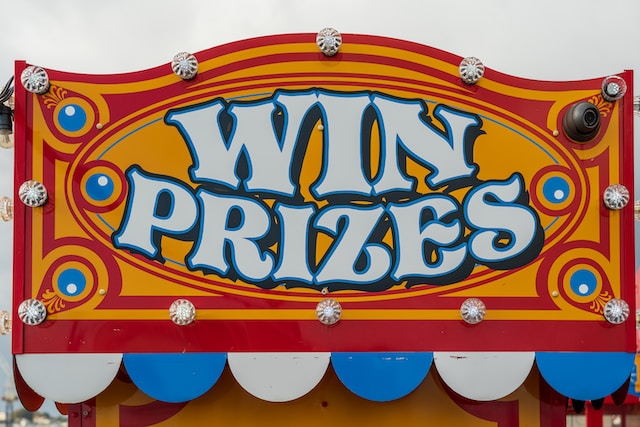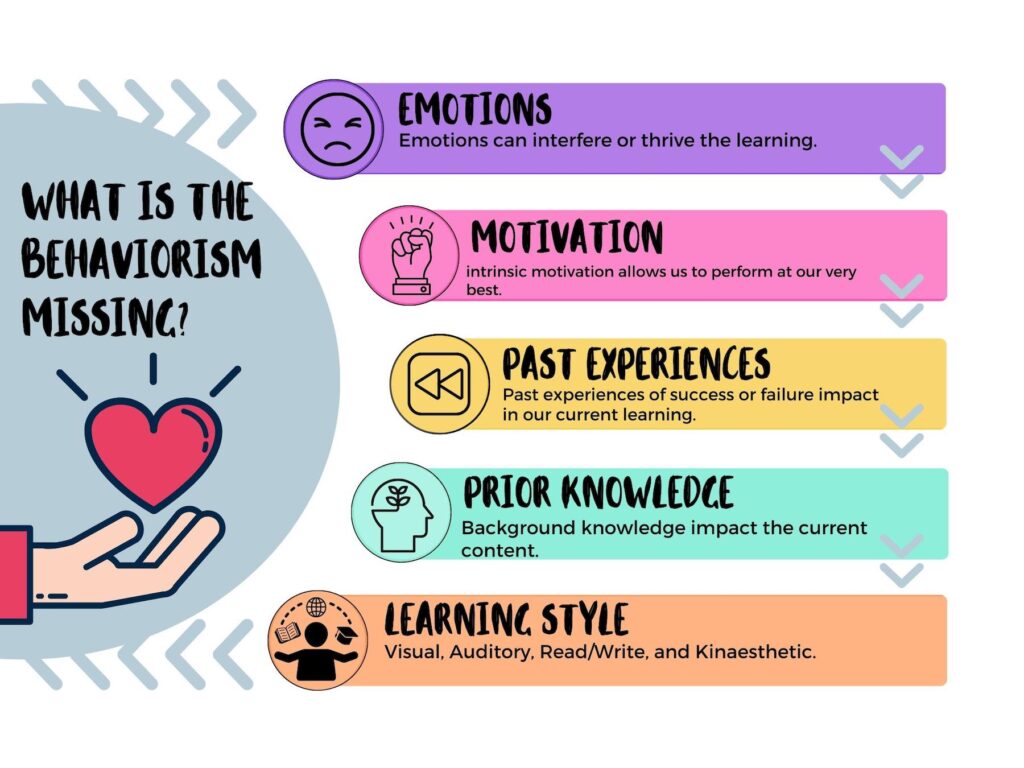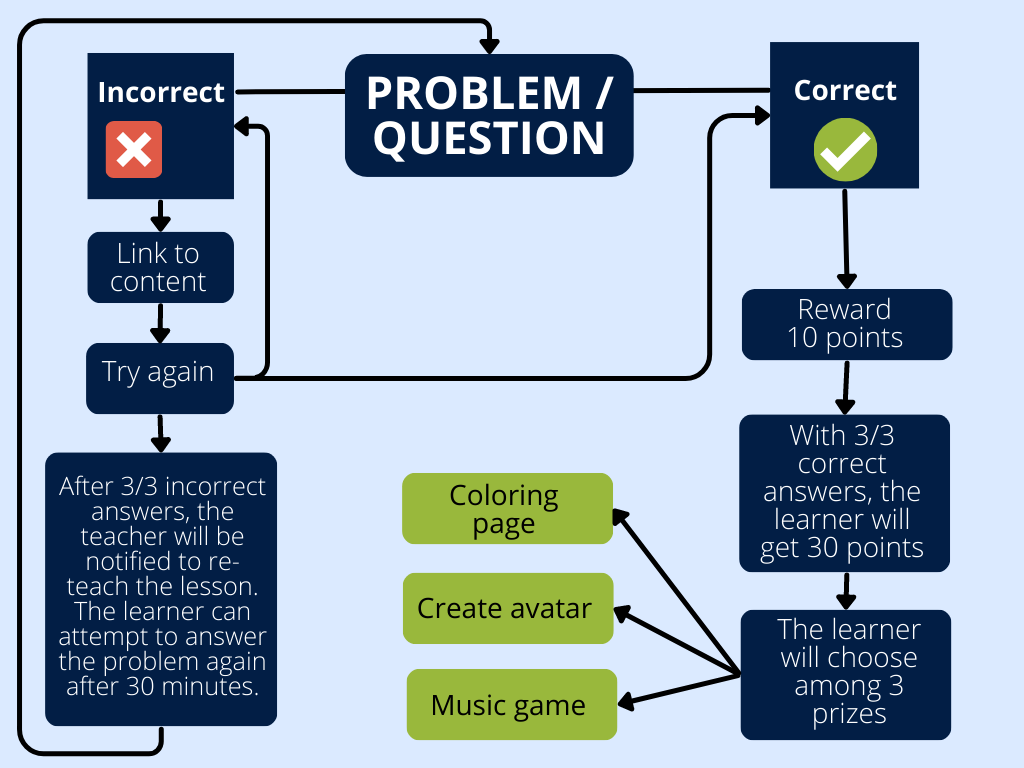What is Behaviorism?
Behaviorism is the first theory I remember studying during my Bachelor’s in Psychology. Behaviorism focuses on observable behavior. Learning occurs through the interaction of an individual with their environment, primarily driven by external stimuli and reinforcement.
There are four main authors in Behaviorism, as you can see below.
Behaviorism by Pilar GonzalezIn 1906, Pavlov shared his main theory about Conditioning. After that, in 1948, Skinner introduced Operating Conditioning, changing the stimulus by positive or negative reinforcement. In Education, we are still using rewards and punishments to increase or decrease specific behavioral responses in our learners, so it is worth it to know about these theories if you are an Instructional Designer. Most of these theories are still applied to Learning Design and Education!
Conditioning by Pilar GonzálezBased on the Behaviorism, the teacher has to manipulate the environment in order to encourage the desired behavior response.
In addition to the main 4 authors in Behaviorism, I am also including a fifth author, Gagné, since in 1965 he made an interesting review of the Behaviorism theories with an application to Instructional Design.
Gagne by Pilar GonzálezWhat are the strengths of Behaviorism in Education?
The Operating Conditioning occurs when the behavior is associated with a consequence (punishment or reward). Most of our Education system is still based on rewards. When the student is able to follow the rules, the teacher is rewarding that behavior with extra recess, a positive note for his parents or even giving him a candy.

On the other hand, if the student is not having a positive behavior, as a punishment, he will lose recess time or call his parents. The hope is that the challenging behavior does not occur again.
Skinner hypothesized that students that are taught via punishment will only learn how to avoid punishment. His recommendation will be to use positive reinforcement (rewards) against negative reinforcements (punishment) to promote the desirable behavior. As a school leader, I discuss with my teachers how it is more beneficial to reward the positive behavior, instead of punishing the not desirable one.
Another influence of Behaviorism in Education is the focus on direct observation and measurement. In K-12 Education we based our instruction in measurable data as the output of the assessments.
Some of our responses are very simple, and can be explained as an immediate consequence of a reward or punishment (think about Facebook and the number of ‘likes’).
However, we can not explain all the learner’s responses using only the behaviorism theories.
What are the limitations of Behaviorism in Education?
Behaviorism is critiqued by its simplicity, disregarding internal mental processes and emotions.

In Behaviorism, the role of the learner is passive. Only the teacher has an active role in changing the environment in order to get the desirable behavior.
The behaviorism can not explain all the responses because we know that the learner has an active role in constructing the knowledge. We actually prefer that instead of a passive learner that only absorbs the content provided by the teacher. Educating active and independent learners is one of the main goals in education.
There are a few alternative pedagogies that are not using this rewards and punishment system, where the reward for the child is his own satisfaction (internal motivation).
Skinner theories work, however they are limited by context. The students learn to behave to get reinforcement in one context (the classroom, the school). When they get home, the behavior is different because they never have the same reinforcement. This is why in schools we encourage parents to have the same rewards as the school, to be consistent with the conditions to repeat the desirable behavior.
Learning scenario based on Behaviorism
This learning scenario is for 2nd grade students based on the content standards for Math. The Module I in the Curriculum (Eureka Engage NY) has the following standard: Fluently add and subtract within 20 using mental strategies (2.OA.2).
I created this learning experience in the middle of the Module and before the final assessment, so the teacher can track the progress of her students in case she needs to re-teach the concept or create differentiation groups.

The conditioned stimulus are:
- Positive reinforcement: if the learner answers correctly, he will gain 10 points. Once he has 30 points, he can choose his favorite activity online among 3 options provided.
- Negative reinforcement: if the learner answers incorrectly, he will not have any points.
- Negative punishment: if the learner answers incorrectly 3 times, he will need to let the teacher know and she will re-teach the concept. The student will be able to try again after 30 minutes.
- Positive punishment: if the learner answers incorrectly the first and the second time, he will have a link to the lesson so he can practice and review the concept before trying again.
The responses to the Math problems can be:
- Correct.
- Incorrect.
All the slides, videos and posters were created by Pilar Gonzalez using Canva. The photo’s author is Nick Fewings on Unsplash